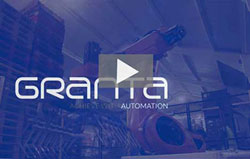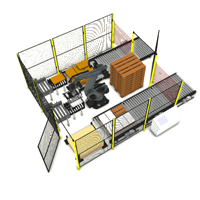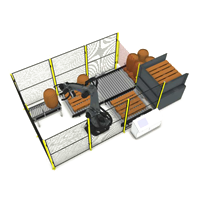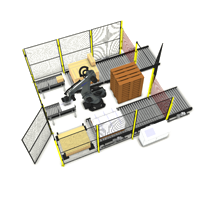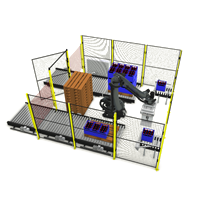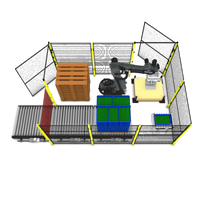In an industry defined by margins, milliseconds, and materials, efficiency is no longer a best practice — it’s the basis of survival.
For decades, manufacturers have sought competitive advantages in scale, location, and labour cost. But the 21st century has shifted the goalposts. In today’s hyper-competitive, globally connected, and unpredictably disrupted markets, the only sustainable edge is operational efficiency.
The most successful manufacturers don’t necessarily spend more. They don’t always own the biggest plants or employ the largest workforces. But what they do have — what consistently sets them apart — is the ability to do more with less, faster, and with higher precision.
Why Efficiency Matters More Than Ever
In 2025, the pressures on manufacturers are unprecedented:
- Global volatility: Supply chain shocks, energy fluctuations, geopolitical instability, and pandemics have forced a rethink of just-in-time logistics and offshore dependencies.
- Labour shortages: Skilled trades and experienced operators are increasingly scarce. Competition for talent is fierce. Retention is fragile.
- Customisation demand: Clients expect shorter lead times, greater flexibility, and personalised products — without cost increases.
- Sustainability mandates: ESG pressures are driving efficiency not just as a financial necessity, but as an ethical imperative.
Every inefficiency — a slow tool change, an outdated scheduling system, a non-integrated data source — represents a silent tax on profitability. And the compounding cost of this inefficiency is enormous.
It is estimated that the average manufacturing plant operates at just 60-70% of its maximum efficiency. The remaining 30-40% is opportunity — or, for the laggards, existential risk.
What the Best Manufacturers Do Differently
Leading manufacturers treat efficiency not as a KPI, but as a company-wide philosophy. Here’s what sets them apart:
1. Process Discipline at Every Level
Top-performing plants have one thing in common: standardised, repeatable processes that leave little to chance. Every task, from raw material intake to final packaging, is documented, time-stamped, and monitored. Variability is identified and eliminated.
But standardisation doesn’t mean rigidity. These manufacturers build flexibility into their operations, allowing them to shift between products or production volumes quickly, without losing control over cost or quality.
2. Empowered Frontline Teams
Modern efficiency isn’t driven solely from the boardroom — it’s shaped by the people on the floor. Operators in high-efficiency environments are trained to recognise waste, stop production when issues arise, and contribute to process improvements.
This is where Lean meets culture: systems like daily Gemba walks, visual dashboards, and autonomous maintenance empower teams to act fast and solve problems early.
3. Data-Driven Decision Making
Gut feel no longer cuts it. High performers capture real-time data from machines, lines, operators, and sensors — and use it to guide decisions. KPIs are tracked in real time, not weekly. Downtime is analysed within minutes, not after shift reports. And continuous improvement becomes measurable, not anecdotal.
A plant that knows its OEE in real-time — and can pinpoint the reason for each efficiency loss — is already miles ahead.
Technology as a Force Multiplier
Efficiency no longer means “doing the same things faster.” It means redefining how things are done — often with the help of technology.
Industry 4.0: Turning Insight into Output
The fusion of operational technology (OT) and information technology (IT) has unlocked the smart factory.
- IoT sensors now provide second-by-second feedback from equipment — enabling predictive maintenance and eliminating unplanned downtime.
- AI and machine learning crunch production data to find hidden inefficiencies, optimise scheduling, and forecast machine failure.
- Digital twins allow manufacturers to model new production layouts or process changes without disrupting operations.
- Cloud-based MES systems integrate ERP, supply chain, and shop floor systems — creating a seamless, real-time view of operations.
- Automation solutions such as robotic palletisers streamline repetitive end-of-line tasks, freeing up skilled labour and reducing cycle time — a small change that can yield significant efficiency gains over thousands of shifts.
Lean + Tech = Smart Efficiency
Technology isn’t a replacement for Lean thinking — it’s an amplifier. Lean gives manufacturers the discipline and mindset to eliminate waste. Technology makes that discipline scalable and repeatable. It enables leaders to:
- See deviations as they happen
- Identify trends across shifts or sites
- Capture tribal knowledge before it walks out the door
- Simulate changes before investing capital
How to Optimise Production Processes: A Proven Framework
Whether you’re running a single plant or managing operations across global sites, the journey toward efficiency follows a clear trajectory.
Step 1: Baseline Performance
Begin with visibility. What is your current OEE? How much downtime is truly unplanned? Where are materials wasted or labour underutilised?
Use value stream mapping, spaghetti diagrams, and time-motion studies. Establish a data-driven baseline before rushing into changes.
Step 2: Prioritise Bottlenecks and High-Cost Areas
You can’t fix everything at once. Focus on areas that impact throughput, scrap, energy usage, or machine uptime. Identify “hidden factories” — workarounds or rework loops that silently erode productivity.
Prioritisation tools like Pareto analysis and 5 Whys help focus limited resources.
Step 3: Digitise for Insight
Install monitoring systems on legacy equipment. Tie manual stations into digital forms. Start with low-code platforms or plug-and-play IIoT devices. Digitisation doesn’t have to mean full automation — it just means turning data into action.
Ensure KPIs are visible to everyone. Operators should see how their work contributes to daily goals.
Step 4: Standardise Workflows and Train Relentlessly
Introduce standard operating procedures (SOPs) for all high-variability tasks. Invest in cross-training. Use visual work instructions, QR-coded manuals, and digital checklists to reduce errors and increase consistency.
Make training continuous — not just for onboarding.
Step 5: Establish a Culture of Kaisen
Efficiency is a daily habit, not a one-off project. Encourage feedback, reward improvement suggestions, and close the loop by implementing operator-driven ideas.
Regular performance reviews, weekly improvement huddles, and recognition programs go a long way in sustaining momentum.
From Efficiency to Market Leadership
Consider this: two manufacturers produce the same product. One delivers it in 2 days with a 1% defect rate. The other in 5 days, with 4% defects, at 8% higher cost.
Which one will win the next contract? Which one will scale profitably? Which one will adapt to the next supply chain shock?
The most efficient manufacturers don’t just produce better — they compete better. They respond faster to change. They reinvest savings into innovation. And they attract customers who value reliability and agility.
Efficiency is the ultimate competitive advantage. It touches everything: output, cost, quality, morale, and customer satisfaction. Operational efficiency is not a destination — it’s a discipline. In today’s market, it’s also a differentiator that cannot be faked or fast-tracked. For operations leaders and plant managers, the mandate is clear: move faster, work smarter, reduce waste, and empower people. The tools are ready. The frameworks are proven. And the winners will be those who treat efficiency not as a quarterly target — but as the foundation for long-term dominance.
If you would like to know more about the Granta palletising systems or AMR/AGV systems and the efficiencies they can bring, then please do get in touch on 01223 499488 or contact us at helpline@granta-automation.co.uk. We will be very happy to help.
Find out more…
- The Hidden Costs of Downtime in Food & Beverage Production
- How Robotic Palletisers Deliver Fast ROI for Manufacturers
- How to Overcome Labour Shortages in Manufacturing & Logistics
- Optimising Food Production with Automated Palletising Solutions
- The Real Cost of Manual Palletising: Why Automation is the Smarter Choice


